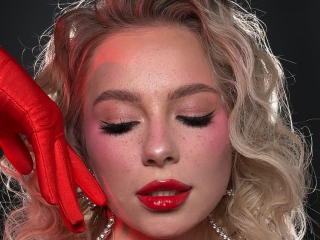Once Upon a Time, Porn Theaters Ruled the Earth
We live in a world where erotic or suggestive material is everywhere, including advertisements for items utterly divorced from sex. Yogurt, for instance. Toilet paper with fluffy bear butts, for another. We can access hardcore content from nearly anywhere except underground parking lots. It hasn’t always been that way, though.
During what we now call the “Golden Age of Porn,” the 15 years between 1969 and 1984, it took some effort to see moving pictures of naked ladies and the men so eager to fuck them. This series will examine what porn producers, porn lovers, and those working within the barely legal porn industry were like, what they were up against, and how they overcame legal obstacles to give the First Amendment the kind of workout it needs to stay in fighting trim. Pun intended.
During those comparatively innocent years, most people’s first exposure to pornographic images was likely through print media, such as magazines. Of course, the opportunity to secretly watch dad’s or an older brother’s 8mm silent “stag films” opened many an eye, as well. Those who wanted to watch moving pictures of people being sexually intimate usually had to do so in theaters. For the truly brave, there were sex shop arcades with their loops.
What is a pornographic film, though? Especially during the so-called Golden Age of Porn? Is it merely anything that presents one or more humans engaged in some form of explicitly sexual behavior? Does it even need to be explicit? Does the term only apply to films, and in those days, they were shot on film, that lack artistic merit? If the director throws in enough artistic elements, does it become art and therefore protected under the First Amendment or is it still smut?
Until 1969, in the U.S., that question was answered with continued suppression and legal action. Then, in Stanley v. Georgia, the Supreme Court concluded that adults had a right to privately possess obscene or pornographic material. The O’Farrell Theatre in San Francisco, CA became one of the first and certainly best-known adult theaters on July 4, 1969. Ironically, the first feature sexually explicit film that received a wide mainstream theatrical release was Blue Movie by Andy Warhol.
The O’Farrell Theatre, owned by the infamous Mitchell Brothers, may have been one of the first, but it wasn’t the last. Not every theater was large or well-financed, many with only about a dozen seats. Within a year of the court’s decision, there were roughly 750 theaters available, most of them in California. Not all of them showed the most erudite or high-quality films and during the 1970s, many shifted from showing 35mm films to far more in-your-face 16mm “beaver” films.
Ironically, a quasi-underground world of porn production existed in New York City at around the same time and either from choice or from legal necessity, it aimed at creating content with plots and, when possible, people who could act on camera as well as fuck.
Ads in newspapers seeking nude models attracted male talent like Eric Edwards and Jamie Gillis, whose work started wordlessly in black-and-white loops made to show at adult arcades throughout Times Square. Yes, Virginia, there was a Times Square before it became Disney-fied. Not everyone was shooting for peep shows, though.
Robert DiBernardo made sure the horny men of the world had more to choose from. The fact he was a member of the Gambino crime family is an uncomfortable and unfortunate part of porn history, but when sexuality is marginalized, it creates a vacuum for underworld elements to profit from and influence. Not only did DiBernardo distribute Golden Age films throughout the country, but he also commissioned most of those shot in New York.
Destined to become the subject of controversy among feminists beyond whether it was merely obscene, Deep Throat, starring Linda Lovelace and Harry Reems, became the first adult film to make its way throughout the entire country’s scattered theaters. The Pussycat Theater chain held the exclusive California license to show the money-maker. While not the best example of what an erotic film can be, celebrities mentioned it on television and the public responded positively.
The dialogue and public opinions surrounding pornography began to change. It was not a dialogue that the Motion Picture Association of America failed to notice. In fact, it had anticipated it and created a shiny new rating system in 1968 that slapped a scary “X” on any film that made it cock its sensitive eyebrow in scandalized disapproval. Pun intended.
The “X” rating and the desire to hire hungry aspiring acting talent seeking work and idealistic enough to believe that porn and popular cinema were compatible resulted in films including the 1972 Behind the Green Door, starring Marilyn Chambers and a taboo-shattering Black man named Johnnie Keyes. The following year, The Devil in Miss Jones, directed by Gerard Damiano and starring the “grande dame” of porn, Georgina Spelvin, left its impact on mainstream film history when popular film critic Roger Ebert gave it the thumbs up. It was also the seventh most successful film of 1973.
During this time of increasing “Porno Chic,” the country’s moral pearl clutchers loudly insisted that exposure to its contents turned people into delinquents and criminals. Sadly, for the wannabe censors, the President’s Commission on Obscenity and Pornography released a study in 1970 that concluded that there was no evidence to support the claims.
Regardless of these findings, the U.S. Supreme Court redefined obscenity in 1973 from being “utterly without socially redeeming value” to having no “serious literary, artistic, or scientific value” and thus not being protected by the First Amendment. Despite their obvious qualifications under this definition, Deep Throat, The Devil in Miss Jones, and Behind the Green Door were all successfully prosecuted that year. Porn, effectively, became illegal and theaters struggled to survive.
Now, the vague concept of “community standards” was introduced as the decision-making body that needed to be satisfied. Inspired by the battle, second-wave feminism pitted pro- and anti-porn forces against one another in a struggle to define sexual liberation for women. With this as backdrop, in 1976 Alice in Wonderland: An X-Rated Musical Comedy became the second porn film to earn a thumbs up from Ebert. The same year, The Opening of Misty Beethoven, starring Constance Money, Jamie Gillis, and Gloria Leonard, which many consider to be the highest example of porn excellence, was released successfully.
When Sony set its new-fangled VCR loose on the American market in 1975, things started to change. No longer forced to leave home to indulge in saucy entertainment, the public had the choice to stay in and rub one out sans the audience. Although still shunned in public, “X” rated videotapes outsold mainstream films during the late 1970s. Sadly for porn lovers, the continued popularity of home viewing convenience was accompanied by lower quality production values. And thus ended the Golden Age of Porn and most of the theaters that had screened it.






















